Young Involvement

How can young people balance their education and involvement in climate action ?
Balancing education and involvement in climate action is crucial for young people. Effective strategies include time management, goal setting, and seeking support from peers and mentors. By prioritizing tasks, breaking down goals into smaller steps, and celebrating milestones, young people can achieve a balance between their education and involvement in climate action initiatives. Joining a community of like-minded individuals, finding a mentor, and collaborating with peers can also provide valuable support and opportunities for growth. With these strategies, young people can make a positive impact on the environment while achieving their educational goals.

How can we encourage more young people to participate in sports for peace initiatives ?
Encouraging young people to participate in sports for peace initiatives involves raising awareness, creating accessible opportunities, developing leadership skills, and celebrating achievements. This can be done through education, publicity, role models, inclusive sports programs, partnerships, funding, training workshops, volunteer opportunities, recognition awards, and community celebrations.

What is the impact of sports on the career aspirations of young people ?
Text: The Impact of Sports on the Career Aspirations of Young People Introduction - Sports are integral to society and significantly impact young people's career aspirations. - This article explores both positive and negative aspects of sports' influence on career goals. Positive Impact 1. Development of Key Skills - Teamwork, leadership, perseverance, and other skills developed through sports are beneficial in any career. 2. Increased Confidence and Self-Esteem - Success in sports can boost confidence and self-esteem, making young people more likely to pursue ambitious career goals. 3. Exposure to Diverse Opportunities - Sports open doors to various career paths and scholarships for higher education. Negative Impact 1. Pressure and Burnout - Intense focus on sports achievements can lead to excessive pressure and burnout. 2. Limited Time for Other Activities - Dedication to sports training may leave little time for exploring other interests or developing skills outside of sports. 3. Injury Risks - The risk of injury is always present in sports and can hinder a young person's ability to pursue a sports-related career or affect overall employability. Conclusion - Sports have a profound impact on the career aspirations of young people. - While they offer numerous benefits, it is essential to be aware of potential drawbacks. - Balancing sports involvement with other activities and interests allows young individuals to make informed decisions about their future career paths while enjoying the benefits of sports.
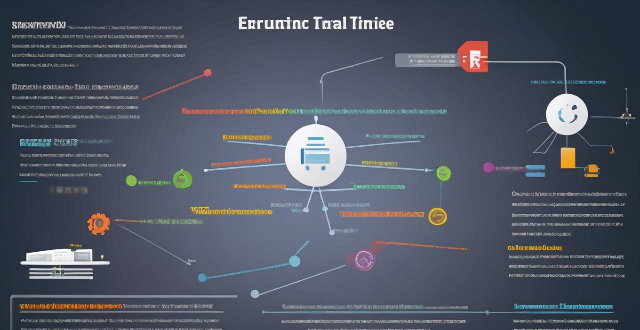
How can policymakers encourage private sector involvement in climate adaptation ?
To encourage private sector involvement in climate adaptation, policyTo encourage private sector involvement in climate adaptation, policy as creating incentives like tax policymakers can implement strategies such as creating incentives like tax breaks and subsidies, establishing clear regulations with compliance enforcement, facilitating information sharing through open data access and collaborative platforms, promoting public-private partnerships with joint projects and long-term commitments, enhancing capacity building via training programs and technical assistance, and recognizing and showcasing success stories through awards and media coverage. These steps will foster a collaborative environment where the private sector actively seeks opportunities to contribute to resilient and sustainable solutions for climate change challenges.

How does sport specialization at a young age impact overall development ?
Sport specialization at a young age can have both positive and negative impacts on a child's overall development. While it allows for skill development, confidence building, and potential opportunities for college scholarships and professional careers, it can also lead to overuse injuries, burnout, limited social interaction, physical development issues, psychological pressure, and narrow life experiences. Parents and coaches are advised to encourage variety in activities, monitor training intensity, promote balance, listen to children's feelings, and seek professional advice to ensure well-rounded development.

How can I gauge the level of parental involvement and community support at a school ?
Gauging the level of parental involvement and community support at a school is crucial for parents when choosing an educational institution for their child. This can significantly impact a student's academic performance and overall development. To gauge these factors, parents can observe school events, talk to other parents, and research the school's reputation. When observing school events, parents should attend open houses, sports games/concerts, and volunteer opportunities to assess the turnout and engagement of parents during these events. A high turnout and active participation suggest strong parental involvement and community support. Parents can also connect with other parents through social media groups, PTA meetings, school drop-off/pick-up times, and school events to ask about their experiences regarding parental involvement and community support at the school. Asking about their level of involvement, supportiveness of the school, communication channels, and impact on student performance can provide valuable insights. Researching the school's reputation online through reviews, rankings, news articles, social media, forums, and message boards can also help gauge parental involvement and community support. Analyzing historical data such as enrollment trends, fundraising results, alumni success rates, and school surveys/feedback can further indicate the level of these factors over time. In conclusion, gauging the level of parental involvement and community support at a school involves attending school events, talking to other parents, and researching the school's reputation. By doing so, parents can make informed decisions about choosing the right school for their child that fosters a supportive and engaging environment conducive to academic success and overall development.

How do sports movies influence young athletes ?
Sports movies have a significant impact on young athletes, providing motivation, inspiration, and valuable life lessons. They showcase role models who have overcome obstacles, teach the importance of perseverance and resilience, highlight teamwork and leadership, and emphasize dedication and sacrifice. These films also explore mental toughness, enjoyment of the process, and cultural impact while incorporating life lessons such as humility, respect, and integrity. However, it's important for young athletes to be aware that sports movies often present an idealized version of reality and should draw inspiration from these stories while understanding the challenges and setbacks of real-life sports.
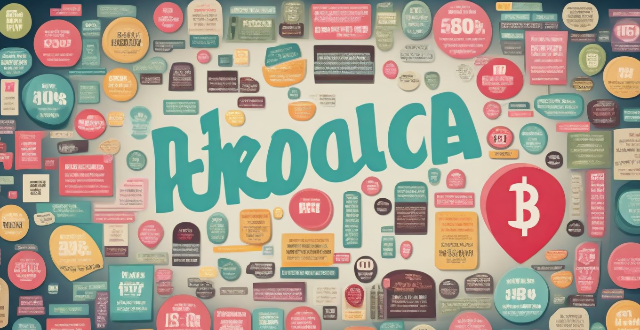
What are some effective methods for teaching financial literacy to young adults ?
Financial literacy is a crucial life skill that every young adult should possess. It involves understanding how to manage money effectively, make informed financial decisions, and plan for the future. Here are some effective methods for teaching financial literacy to young adults: start with the basics, use interactive learning tools, encourage real-world practice, and provide access to financial professionals.
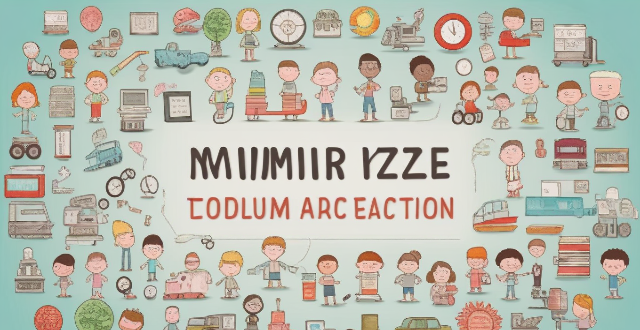
What challenges do young people face when trying to participate in climate action ?
The text summarizes the challenges faced by young people in climate action. These include a lack of awareness and education, limited resources and opportunities, social and political barriers, emotional and psychological challenges, and practical difficulties. Despite these obstacles, it is crucial for young individuals to engage in climate action to create positive changes and contribute to a more sustainable future.

What are some effective strategies for teaching climate change to young children ?
Teaching climate change to young children can be a daunting task, but it is crucial to help them understand the impact of their actions on the environment. Here are some effective strategies for teaching climate change to young children: Start with simple explanations, use visual aids, encourage hands-on learning, involve them in environmental activities, use storytelling, discuss solutions, make it relevant to their lives, and encourage critical thinking.

How do individual versus team sports impact self-esteem in young people ?
The text discusses the impact of individual versus team sports on self-esteem in young people. It outlines key points such as the focus on personal growth and discipline in individual sports, and the social support and collaboration learned in team sports. The benefits of each type of sport are also highlighted, including increased autonomy and clear feedback from individual sports, and social skills development and resilience from team sports. A comparative analysis is provided, discussing the pros and cons of each type of sport in relation to self-esteem. The conclusion suggests that both types of sports can positively impact self-esteem, but finding the right fit for each individual is crucial.

What are the most effective ways to engage young people in climate science communication ?
Engaging young people in climate science communication is crucial for creating a sustainable future. Here are some effective ways to do so: 1. Use interactive and engaging methods such as gaming and simulations, visualization tools, and interactive workshops to make complex climate concepts more accessible and fun to learn. 2. Involve young people in the process by involving them in participatory research, citizen science projects, and advocacy and activism to increase their ownership and interest in climate science. 3. Make it relevant to their lives by providing localized information, discussing career opportunities, and sharing personal stories to help young people understand the impact of climate change on their lives and communities. By using these strategies, we can inspire the next generation of climate leaders and create a more sustainable future for all.

In what ways can we promote gender equality in sports for young children ?
Gender equality in sports is crucial for fairness and respect, especially among young children. To promote this, mixed-gender teams should be encouraged, equal opportunities provided, non-binary athletes supported, coaches and parents educated about gender equality, diversity celebrated, gender bias addressed, and safe spaces created for all athletes.

How do sports movies affect the recruitment and retention of young athletes in various sports ?
Sports movies have a significant impact on the recruitment and retention of young athletes in various sports. They inspire young people to take up sports, provide role models for them to look up to, and expose them to new sports they may not have considered before. Sports movies also help retain young athletes by providing motivation during tough times, building a sense of community among athletes, and helping them set goals for themselves. As such, sports movies should be considered an important tool for promoting youth sports participation and development.

What skills do young people need to effectively participate in climate action ?
The article discusses the various skills that young people need to develop in order to participate effectively in climate action. These skills include scientific literacy, critical thinking, communication, collaboration, advocacy, practical skills, financial literacy, emotional intelligence, and digital literacy. The article emphasizes that having a blend of these skills will enable young people to contribute meaningfully to efforts aimed at mitigating the effects of climate change.

What are the benefits of youth participation in climate change initiatives ?
Youth participation in climate change initiatives is crucial for several reasons. Here are some of the benefits: ### 1\. **Education and Awareness** - **Increased Knowledge:** Young people who participate in climate change initiatives gain a deeper understanding of the science behind climate change, its causes, and potential solutions. This knowledge can be used to make informed decisions about their own lives and advocate for change in their communities. - **Awareness of Environmental Issues:** Through participation, youth become more aware of environmental issues such as deforestation, pollution, and biodiversity loss. This awareness can lead to lifestyle changes that reduce their carbon footprint and inspire others to do the same. ### 2\. **Skill Development** - **Leadership Skills:** Participating in climate change initiatives often involves working with teams, planning events, and advocating for change. These experiences help young people develop leadership skills that will be valuable throughout their lives. - **Communication Skills:** Climate change initiatives require effective communication to raise awareness, share information, and persuade others to take action. Participating in these initiatives helps young people develop strong communication skills that will benefit them in all areas of life. ### 3\. **Policy Influence** - **Voices Heard:** Young people represent a significant portion of the population and have unique perspectives on climate change issues. By participating in initiatives, they can ensure that their voices are heard by policymakers and influence policies related to climate change. - **Advocacy Efforts:** Youth involvement in climate change initiatives often includes advocacy efforts aimed at convincing governments and businesses to adopt more sustainable practices. These efforts can lead to real change on a local, national, or even global level. ### 4\. **Personal Growth** - **Sense of Purpose:** Participating in climate change initiatives can give young people a sense of purpose and motivation to make positive changes in the world around them. This sense of purpose can lead to greater satisfaction with life and increased mental well-being. - **Confidence Building:** Successfully participating in climate change initiatives can build confidence and self-esteem by showing young people that they have the power to create positive change in their communities and beyond. ### 5\. **Networking Opportunities** - **Connections with Like-Minded Individuals:** Participating in climate change initiatives provides opportunities for young people to connect with others who share their passion for environmental protection and sustainability. These connections can lead to lasting friendships, collaborations, and professional opportunities down the line. - **Mentorship Opportunities:** Many climate change initiatives involve working alongside experienced professionals who can serve as mentors and provide guidance on career paths related to environmental protection and sustainability.

Can celebrity involvement in charity work have a negative impact ?
Celebrity involvement in charity work can bring attention and funds to organizations but may also have negative consequences such as overshadowing the cause, misalignment of values, dependency on celebrity influence, manipulation of emotions, and impact on other charities. It is important for both celebrities and charities to ensure their partnership is authentic, transparent, and aligned with the mission and values of the organization to minimize any adverse effects and maximize positive outcomes.
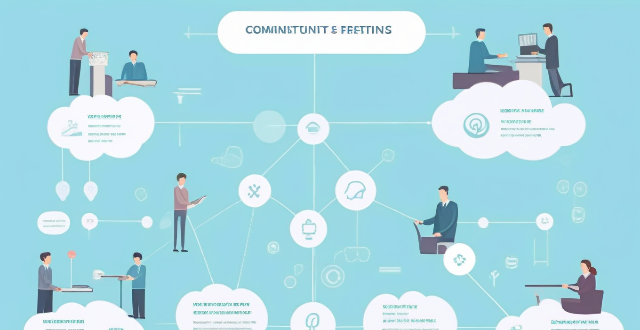
What is the importance of community involvement in developing climate adaptation plans ?
Importance of community involvement in developing climate adaptation plans includes enhancing trust and legitimacy, addressing local needs and concerns, promoting co-production of knowledge, ensuring social justice and equity, and facilitating long-term sustainability.

How should we prioritize the protection of endangered species and ecosystems ?
The protection of endangered species and ecosystems is a critical issue that requires immediate attention. Here are some strategies we can employ to prioritize their protection: 1. Conduct comprehensive surveys and studies to identify and understand the current state of endangered species and ecosystems. 2. Develop effective legislation and policies, such as establishing protected areas, regulating hunting and fishing, and promoting sustainable development. 3. Raise public awareness and involvement through education programs, community involvement, and media campaigns. 4. Collaborate internationally by signing international agreements, sharing knowledge and resources, and coordinating conservation efforts. By taking these steps, we can work towards ensuring the survival of our planet's diverse flora and fauna for future generations.
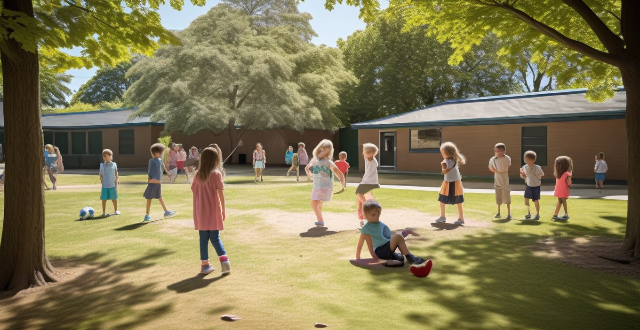
How can governments implement policies to increase public awareness about environmental issues ?
Governments can increase public awareness about environmental issues by implementing a combination of educational initiatives, community involvement programs, collaborations with NGOs, technological innovations, and regulatory policies. These include integrating environmental education into the school curriculum, broadcasting public service announcements, organizing workshops and seminars, encouraging community involvement through cleanup drives, tree planting events, and recycling programs, forming partnerships with NGOs, providing funding for environmental projects, running joint campaigns with NGOs, developing mobile apps, leveraging social media, offering online courses, implementing bans on single-use plastics, introducing carbon taxes, and enforcing green building codes. By doing so, governments can foster a culture of environmental responsibility and encourage individuals and organizations to take action toward a more sustainable future.

How has the involvement of the private sector influenced the strategies for global climate governance ?
The influence of the private sector on global climate governance strategies is evident in innovation, finance, and policy-making. Private companies invest in research and development of new technologies that can reduce greenhouse gas emissions and commercialize these technologies for widespread use. They lead the way in developing renewable energy sources and improving energy efficiency. In terms of finance, private companies issue green bonds and venture capitalists invest in startups focused on climate solutions. They also participate in carbon markets and create carbon offset programs. In policy-making, private companies engage in advocacy and lobbying efforts to shape government policies related to climate change and integrate corporate social responsibility into their business models. They collaborate with governments and international organizations in public-private partnerships and multi-stakeholder initiatives. Overall, the involvement of the private sector has significantly influenced global climate governance strategies by driving innovation, providing financial resources, and shaping policy decisions.

How can young people get involved in climate action ?
Young people can get involved in climate action by educating themselves, joining youth organizations, advocating for change, taking local action, volunteering, and supporting sustainable businesses.

What impact does sports culture have on youth development ?
The article discusses the impact of sports culture on youth development, highlighting its benefits in physical health, mental well-being, social skills, and emotional growth. Participating in sports activities helps young people improve their fitness levels, motor skills, self-esteem, stress management, teamwork, leadership skills, cultural exchange, resilience, goal setting, and achievement. Encouraging young people to participate in sports can help them become well-rounded individuals who are better prepared for adulthood.

What role does sports education play in reducing obesity rates among youth ?
The text discusses the role of sports education in reducing obesity rates among youth. It highlights how sports education promotes physical activity, teaches healthy habits, builds self-esteem and confidence, and provides social support. The author emphasizes that by incorporating sports education into schools and communities, young people can develop lifelong habits that promote good health and reduce their risk of obesity.
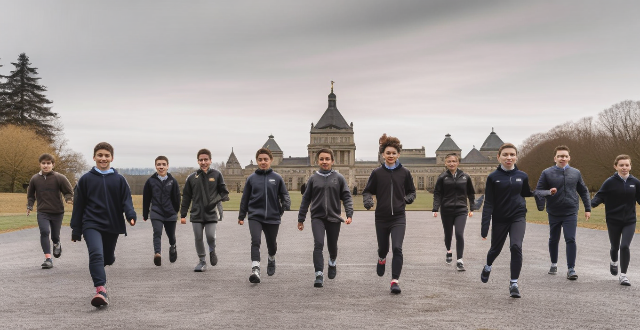
How do sports exchange programs contribute to cultural awareness and appreciation among youth ?
Sports exchange programs offer young athletes a platform to engage in cultural exchanges and foster cultural awareness and appreciation. These programs expose youth to different cultures, promote language learning, and include cultural exchange activities that break down cultural barriers. Additionally, sports exchange programs celebrate diversity, build lasting friendships, and encourage the embrace of cultural differences, contributing to a more harmonious global community.

How can young people get involved in climate action advocacy ?
Young people play a crucial role in advocating for climate action by educating themselves and others, joining youth climate movements, attending climate strikes and protests, using social media to spread the message, and volunteering with environmental organizations.